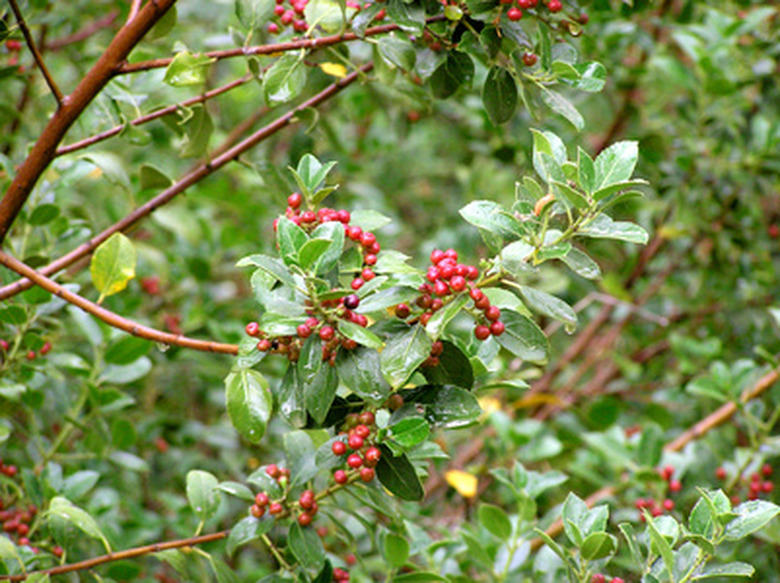Pests & Diseases Of Japanese Holly
Japanese holly (Ilex crenata) is a desirable shrub for its small evergreen foliage, which gives it a fine, graceful texture. The plant can also tolerate heavy pruning and is quite hardy, making it a popular choice as a hedge plant with home gardeners and landscapers. Japanese holly is hardy in United States Department of Agriculture (USDA) growing zones 6 through 8. Most pests and diseases of the shrub, save one, are minor and not-life threatening.
Insect Pests
Pest problems can plague Japanese holly shrubs, according to Edward F. Gilman, a horticulturist with the University of Florida. Although insects such as nematodes, scale, spittle bugs and spider mites can infest these plants, the activities of the bugs are not life-threatening to the Japanese holly and are more of an unattractive nuisance.
Signs of insect pests can include tiny white webs, spittle clusters, or groups of bugs clustered under leaves and along the stems of the holly. Treating the plant with an insecticidal oil or pesticide is the quickest and most effective way of ridding the Japanese holly of the insects.
- Japanese holly (Ilex crenata) is a desirable shrub for its small evergreen foliage, which gives it a fine, graceful texture.
- The plant can also tolerate heavy pruning and is quite hardy, making it a popular choice as a hedge plant with home gardeners and landscapers.
Thielaviopsis Blight (Black Root Rot)
Black root rot is the most serious disease that affects Japanese holly, according to Mary Ann Hansen, a plant pathologist at Virginia Tech University. The disease is caused by the fungus Thielaviopsis basicola and destroys the roots of the plant, causing the plant to eventually die. Symptoms include yellow foliage, wilting and dropping leaves and twig dieback.
Plants that already show extensive symptoms cannot be saved and should be removed. Nearby plants that do not yet show symptoms can be treated by drenching the soil with a fungicide that contains thiophanate methyl. Follow the instructions on the label as per the size of your plant.
Cylindrocladium Leaf Spot
Cylindrocladium leaf spot is a fungal disease that affects the leaves of Japanese holly. The first symptom is tiny orange spots that swell and turn brown or black. Often the spots are ringed with purple halo. Diseased leaves may drop prematurely.
- Black root rot is the most serious disease that affects Japanese holly, according to Mary Ann Hansen, a plant pathologist at Virginia Tech University.
- Cylindrocladium leaf spot is a fungal disease that affects the leaves of Japanese holly.
The disease can be treated with a systematic application of a spray fungicide. Once the spots have spread, it is usually too late to do anything for the plant for that season, but you can prevent it from returning again the next year. Spray the plant thoroughly when the leaves start uncurling in the spring, and continue to re-apply the fungicide every other week until new growth has stopped sprouting.
